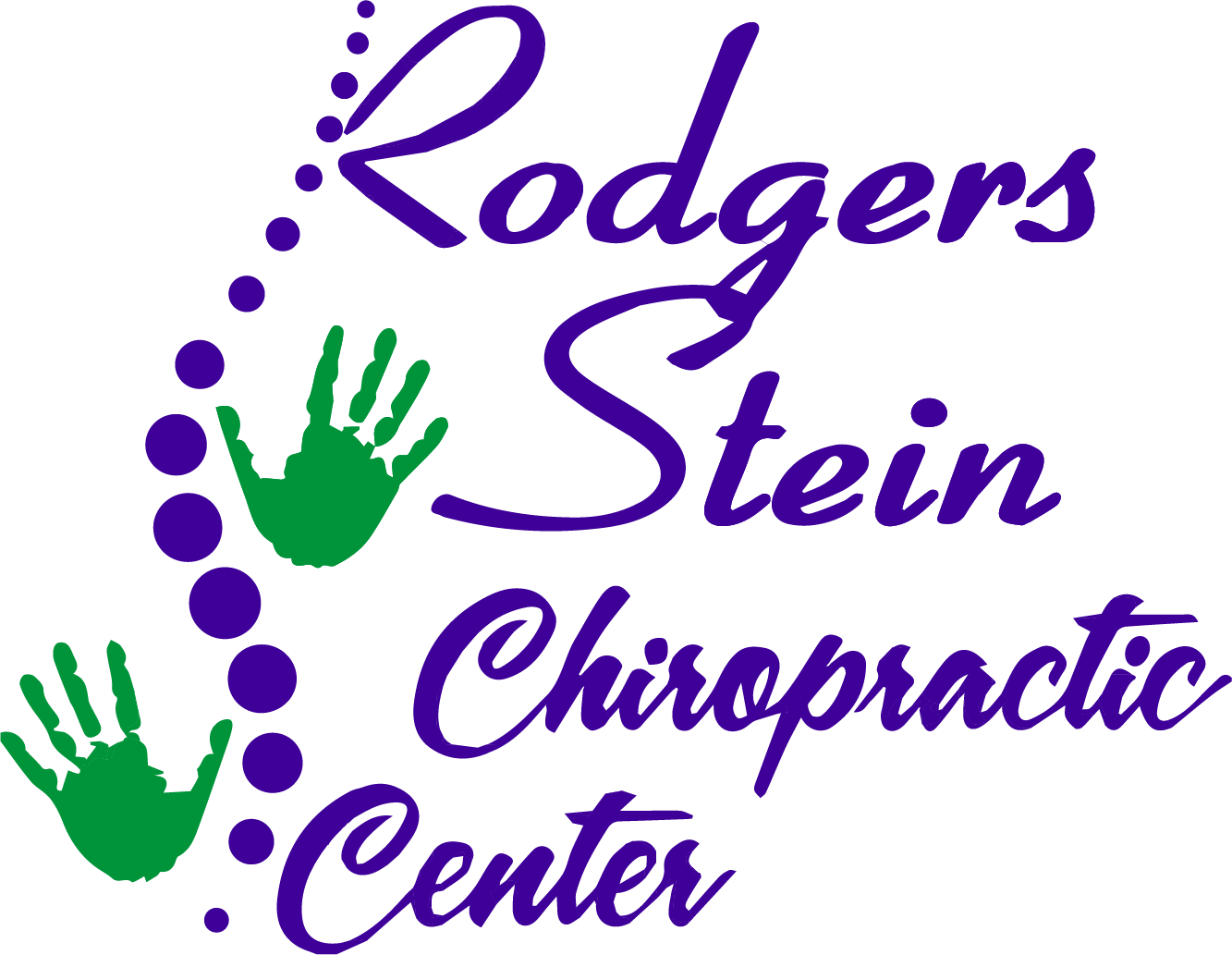You might find yourself questioning the benefits of chiropractic care, just as I did when I first began my journey. The initial skepticism can be disarming, but as you explore the principles behind spinal adjustments, you could uncover a surprising connection between your body and mind. With each session, the sense of calm may start to seep into your daily life, reshaping your understanding of wellness. But what truly happens when you embrace this holistic approach? The answers might change everything for you.
The Beginning of My Journey
From the moment you step into a chiropractic office, you might feel a mix of curiosity and apprehension. You're surrounded by unfamiliar sights and sounds—adjustable tables, charts on the walls, and the gentle hum of conversation. It's natural to wonder what's about to happen. Will it hurt? Will it help? These questions race through your mind as you check in and take a seat, perhaps flipping through a magazine to distract yourself.
Once you meet the chiropractor, a sense of reassurance may wash over you. They greet you warmly, inviting you to share your concerns and symptoms. You find yourself opening up about your discomfort, whether it's chronic back pain, neck tension, or something else entirely. The chiropractor listens attentively, making you feel heard and understood.
As you discuss your medical history and lifestyle, you start to realize this isn't just a quick fix; it's the beginning of a journey towards better health. You might feel a sense of hope as they explain how chiropractic care can help improve your overall well-being.
You're then led to the treatment room, where you'll experience your first adjustment. With each gentle movement, tensions begin to release. It's a new sensation, unlike anything you've experienced before.
You leave the office feeling lighter, both physically and mentally. This is just the start, but you can already sense that you're on the path to feeling better and reclaiming your life.
Understanding Chiropractic Principles
Chiropractic care is grounded in several key principles that focus on the relationship between the spine and the nervous system. When you reflect on your body's functions, it's crucial to realize how interconnected everything is. Your spine houses the spinal cord, which serves as the main pathway for messages between your brain and the rest of your body. If there's a misalignment in your spine, it can interfere with this communication, leading to various health issues.
One fundamental principle is the idea that the body has an innate ability to heal itself. Chiropractors believe that by correcting spinal misalignments, or subluxations, you can enhance your body's natural healing processes. This means that the adjustments you receive aren't just about alleviating pain; they're about restoring overall function and well-being.
Another core concept is the emphasis on prevention. Regular chiropractic care can help maintain spinal health, which in turn supports peak nervous system function. By addressing issues before they escalate, you can avoid chronic problems down the line.
Moreover, chiropractic care emphasizes a holistic approach to health. It encourages you to reflect on how lifestyle factors, such as diet, exercise, and stress management, influence your well-being.
Understanding these principles not only clarifies what to expect from chiropractic care but also empowers you to take an active role in your health journey. Embracing these concepts can lead to a more balanced, healthier life as you navigate your wellness path.
The Connection Between Body and Mind
You mightn't realize how closely your mind and body are linked, but they influence each other more than you think.
Physical tension and stress can manifest in your body, impacting your overall well-being.
Chiropractic alignment can help restore balance, promoting a healthier connection between your mind and body.
Mind-Body Connection Explained
At its core, the mind-body connection reveals how our mental state influences our physical health and vice versa. You may not always realize it, but your thoughts, emotions, and beliefs can shape how your body feels and functions. When you're stressed or anxious, you might notice tension in your muscles or headaches. Conversely, physical discomfort can lead to feelings of frustration or sadness, creating a vicious cycle.
Understanding this connection can empower you to take charge of your well-being. By recognizing that your mental state affects your body, you can start implementing strategies to foster a healthier mindset. Practices like mindfulness, meditation, and yoga can help you cultivate a sense of calm and reduce negative thoughts.
Chiropractic care plays a vital role here, as it not only addresses physical ailments but also supports mental clarity and emotional balance. When your spine is aligned, it can improve your overall energy and mood, enhancing your ability to cope with life's challenges.
Ultimately, nurturing the mind-body connection allows you to approach healing holistically, creating a more balanced and fulfilling life. Embrace this journey, and you'll likely find a deeper sense of wellness overall.
Physical Tension and Stress
Physical tension often arises as a direct response to stress, creating a tangible link between your mental state and bodily sensations. When you're overwhelmed by stress, your body instinctively tenses up, preparing for a fight-or-flight response. You might notice tightness in your shoulders, neck, or back, which signals that your mind is in turmoil.
This physical manifestation of stress can become a cycle; the more you tense up, the more stress you feel, and vice versa. You may find that this tension affects your daily life, hindering your ability to concentrate or relax. As you try to manage your responsibilities, the pressure mounts, and your body responds accordingly.
Recognizing this connection is essential; it's not just about feeling stressed mentally but also about how it's physically affecting you. Taking time to check in with your body can be eye-opening. Are you clenching your jaw or holding your breath?
Acknowledging these physical signs allows you to address them more effectively. By understanding how stress translates into physical tension, you can begin to explore ways to alleviate both your mind and body, fostering a sense of calm and balance.
Benefits of Chiropractic Alignment
Alignment plays an essential role in harmonizing the connection between your body and mind. When your spine is properly aligned, it allows your nervous system to function efficiently. This means your brain can communicate effectively with your body, reducing physical tension and mental stress. By addressing misalignments, chiropractic care not only alleviates pain but also promotes emotional well-being.
You might notice that after a chiropractic adjustment, you feel lighter and more focused. This is because proper alignment can enhance blood flow and oxygen delivery to your brain, improving your mood and mental clarity. With less discomfort and tension, you're more likely to engage in activities that uplift your spirit and foster relaxation.
Additionally, regular chiropractic visits can help you manage stress more effectively. As your body becomes more balanced, you're likely to respond better to challenges, reducing anxiety levels.
You'll find that you're not just treating physical symptoms; you're nurturing a deeper connection between your body and mind.
Incorporating chiropractic alignment into your wellness routine can lead to a more harmonious life, where both your physical and mental states thrive together. Embrace this journey, and you may discover newfound calmness and resilience.
My First Chiropractic Experience
You might feel a mix of excitement and nerves as you walk into your first chiropractic appointment.
With concerns swirling in your mind, the moment of your first adjustment arrives, and you brace yourself for the experience.
As you settle in, you may start to notice immediate effects that leave you questioning why you waited so long to try it.
Initial Hesitations and Concerns
Before stepping into the chiropractic office for the first time, many people grapple with a mix of curiosity and apprehension. You might wonder if chiropractic care is right for you or if it'll be effective in addressing your discomfort. The thought of someone manipulating your spine can be intimidating. You may even question the safety of the techniques involved, worrying about potential risks or complications.
It's normal to have concerns about what to expect during your initial visit. You might feel anxious about being examined or sharing personal health details with a stranger. Additionally, the unfamiliar environment can add to your hesitation—will the staff be welcoming? Will you feel comfortable?
You may also consider whether chiropractic care is a legitimate solution or just another trend. With so much information available online, separating fact from fiction can be overwhelming. You might find yourself weighing the opinions of friends or family who've had their own experiences, which can either calm your nerves or amplify them.
Ultimately, acknowledging these hesitations is an essential step toward understanding your journey into chiropractic care. Embracing your concerns can help you approach your first visit with a more open mind.
First Adjustment Experience
Stepping into the chiropractic office for your first adjustment can feel like a significant moment, especially after all those initial hesitations.
You might notice the calming atmosphere, with soft lighting and soothing sounds that seem to ease your nerves. As you check in, the receptionist greets you warmly, and suddenly, the tension begins to fade.
When it's your turn, the chiropractor invites you into a treatment room. You'll sit down for a quick chat about your concerns and what you hope to achieve through care. This conversation reassures you that you're in good hands.
Lying down on the adjustment table, you might feel a mix of anticipation and uncertainty. The chiropractor gently examines your spine, explaining each step as they go. You'll hear the familiar "pop" of your joints, and surprisingly, it feels relieving rather than intimidating.
Throughout the process, you realize that it's less about the mechanics and more about the connection between your body and the chiropractor.
Immediate Effects Noticed
Following your first adjustment, a wave of relaxation washes over you, almost as if a heavy weight has been lifted. You take a deep breath, feeling the tension in your muscles ease and your mind clear. The immediate effects are striking; you notice improved mobility in your neck and back, which feels liberating. It's as if your body is thanking you for finally addressing those long-standing aches.
As you sit up, you might feel a subtle warmth spreading through your spine, signaling that something has shifted. Your posture feels more aligned, and you can't help but smile at the newfound lightness in your step. You might even detect a sense of mental clarity, as if a fog has lifted.
After the adjustment, you find yourself more aware of your body, noticing how it moves and responds. The little things—like turning your head or reaching for something—feel easier.
You realize that this experience is just the beginning of a journey toward better health and well-being. Embracing this newfound comfort, you can't wait to see how chiropractic care will enhance your life moving forward.
Techniques That Transformed Me
Throughout my chiropractic care journey, several techniques haven't only alleviated my pain but also transformed my overall well-being. One of the standout methods is spinal manipulation. When your chiropractor applies precise adjustments, you experience immediate relief from tension and discomfort. This technique realigns your spine, helping to restore your body's natural balance.
Another transformative approach is myofascial release. This technique focuses on relieving tension in the fascia, the connective tissue that surrounds your muscles. When your chiropractor gently applies pressure to specific areas, it helps release built-up tension, promoting relaxation and increasing your range of motion. You'll feel the difference in how you move and carry yourself throughout the day.
Active release therapy (ART) has also played a significant role in my journey. This hands-on technique targets specific muscles and tendons that are tight or injured. By engaging with the affected areas, your chiropractor helps break down scar tissue and promotes healing. You'll notice that previously stubborn pain starts to fade and your body feels more agile.
Lastly, I can't forget about the importance of therapeutic exercises. Your chiropractor will often prescribe specific movements that strengthen your core and support your spine. These exercises empower you to take charge of your health, enhancing your stability and resilience.
With each of these techniques, you'll find yourself not just managing pain but thriving in your daily life. Your journey to well-being is just beginning.
Overcoming Skepticism and Fear
Many people face skepticism and fear when considering chiropractic care, often stemming from misunderstandings about the techniques and their effectiveness. You might wonder if it's safe or if it can really help your specific issues. It's completely normal to feel this way, especially when you're bombarded with conflicting information.
The first step in overcoming your doubts is to educate yourself. Research the principles of chiropractic care and read testimonials from others who've had positive experiences. You'll find that many patients report significant improvements in their well-being, which can help alleviate your concerns.
Next, consider scheduling a consultation with a chiropractor. This initial meeting is an opportunity to ask questions and discuss your fears openly. A good chiropractor will take the time to explain their methods, address your concerns, and outline a personalized treatment plan. Their willingness to listen and communicate can help build trust and ease your anxiety.
You might also find it helpful to talk to friends or family members who've tried chiropractic care. Hearing firsthand accounts can provide reassurance and encourage you to take that next step.
Lastly, remember that it's okay to be cautious. Your health journey is personal, and you should feel comfortable with every decision you make. By educating yourself, seeking professional advice, and connecting with others, you can overcome skepticism and fear, opening the door to a potentially transformative experience in chiropractic care.
The Role of Regular Adjustments
While you may initially seek chiropractic care for specific issues, regular adjustments play a significant role in maintaining overall health and preventing future problems. When you commit to ongoing chiropractic visits, you're not just addressing pain or discomfort; you're actively supporting your body's alignment and functionality.
Regular adjustments help to restore your spine's natural position, which can improve nerve function and enhance communication between your brain and body. This connection is vital for peak performance in daily activities, whether you're an athlete, a busy professional, or managing a household. By keeping your spine aligned, you can reduce the risk of developing chronic conditions and prevent minor aches from escalating into more significant issues.
Additionally, regular chiropractic care can improve your overall mobility and flexibility. As your body becomes more balanced and aligned, you'll find it easier to engage in physical activities. This can lead to a more active lifestyle, which is important for maintaining a healthy weight and reducing stress levels.
Moreover, establishing a routine with your chiropractor fosters a deeper understanding of your body. You'll become more aware of how lifestyle choices affect your well-being. Your chiropractor can offer personalized advice to help you maintain your health outside of appointments, including guidance on posture, exercises, and ergonomics.
Incorporating regular adjustments into your health regimen is a proactive approach that pays off in the long run, ensuring you stay balanced, mobile, and healthy.
Emotional Benefits of Chiropractic Care
As you explore chiropractic care, you might be surprised to discover its emotional benefits, which often go hand in hand with physical healing. Many people find that regular adjustments not only alleviate pain but also reduce stress and anxiety. When your body feels aligned and free of tension, your mind often follows suit. You might notice a clearer mindset and a greater sense of calm after each session.
Chiropractic care works by improving your nervous system function, which can greatly impact your mood. By addressing spinal misalignments, your chiropractor helps restore a balanced flow of energy throughout your body. This can lead to reduced feelings of irritability and enhanced emotional stability. You may even find that your sleep improves, allowing you to wake up feeling more refreshed and ready to tackle the day.
Moreover, the supportive environment in a chiropractic office can provide a sense of community and connection. Having a trusted professional who listens to your concerns and guides you through your healing journey can foster feelings of support and empowerment. You're not just addressing physical discomfort; you're nurturing your emotional well-being as well.
Lastly, as you begin to experience the cumulative benefits of chiropractic care, you may find yourself feeling more resilient in the face of life's challenges. This newfound emotional strength can help you navigate stressors with greater ease, ultimately contributing to a more balanced and fulfilling life. Embracing chiropractic care can pave the way toward a more harmonious mind-body connection.
Tips for Finding Your Calm
In the hustle and bustle of daily life, finding your calm can feel like an intimidating task. However, with a few practical strategies, you can cultivate a sense of peace amidst the chaos. Start by carving out a few minutes each day for deep breathing exercises. Inhale deeply through your nose, hold for a moment, and exhale slowly through your mouth. This simple practice can help ground you and reduce stress.
Next, consider incorporating mindfulness into your routine. Whether it's through meditation, yoga, or simply taking a quiet walk, being present in the moment allows you to reconnect with yourself. Aim to engage your senses fully—notice the sounds around you, the textures you touch, and the sights you see.
Another effective tip is to create a calming environment. Declutter your space, add plants, or play soft music to foster a soothing atmosphere. Surrounding yourself with elements that promote relaxation can greatly impact your mindset.
Don't forget to prioritize self-care. Schedule regular breaks throughout your day, indulge in a warm bath, or read a good book. These moments of self-nurture can help you recharge and find balance.
Lastly, remember to reach out for support. Whether through friends, family, or professionals like chiropractors, sharing your feelings can lighten your emotional load. Embracing these practices will guide you on your journey to finding your calm.
Conclusion
In your own journey with chiropractic care, you can discover a profound sense of calm and balance. Embrace the healing potential of spinal adjustments, and pay attention to the connection between your body and mind. Regular sessions can alleviate stress and foster resilience, allowing you to prioritize self-care. As you explore holistic practices, remember that each adjustment is a step toward emotional strength and a more peaceful life. You have the power to find your calm.



